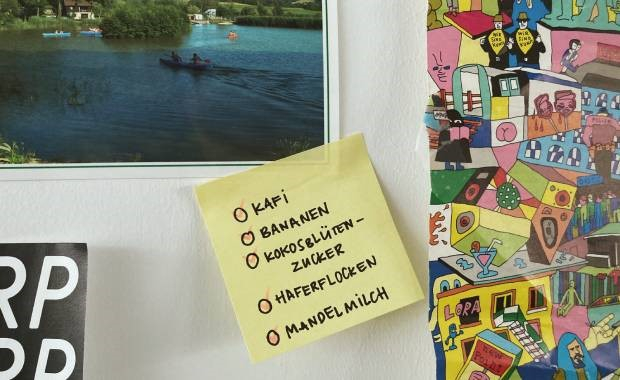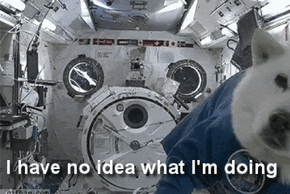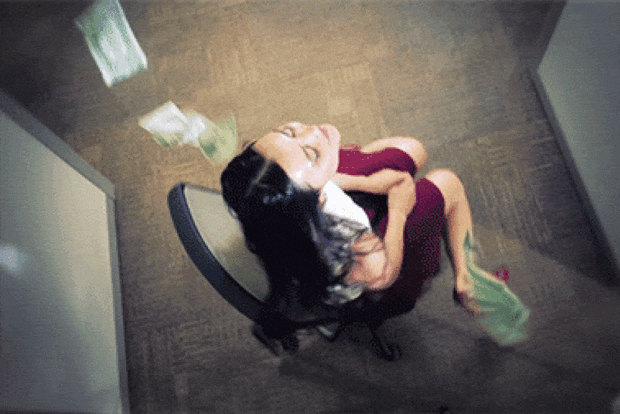back
Sponsored Post

Sponsored Post
FreeUnter Sponsored Post schreibt die Redaktion Artikel rund um ein Produkt. So ehrlich und direkt, wie man Ron aus dem Newsletter kennt.
City of residence
Zürich
Follower
5

A different perspective on breakfast
This is the shopping list that my flatmate Luki wrote on a post-it yesterday, which looks much the same as the lists of many other millenials.It took him three minutes to walk to the nearest shop, where he filled his basket, went through the self-checkout and then headed back home. This morning, he sprinkled a few nuts and berries on top of his healthy instagrammable porridge, and it was ready for him to eat for breakfast. Easy! This article has been written in collaboration with Fairtrade Max Havelaar.A little too easy, maybe? We all think we're aware that something isn't quite right and that everything we do isn't as good for the planet or as easy for the majority of people as it was for Lukas (and for me and you). That's why we dutifully recycle everything we can, donate to a few charities and try to live according to a few legitimate-sounding principles about consumption and lifestyle. But we don't generally confront the realities of lives that, we think, are a long way from our own, but that are actually right in front of us on our plates. A film tip for breakfastAn impressive short documentary series produced by young local film-makers from Peru, Kenya, and Indonesia gives us an exciting and authentic look at the bigger picture, but without moralising. Three people, who are all somehow involved in Luki's porridge, give insights into their lives, their work, their challenges, dreams, and struggles…Meet PoonishWhile the coconut blossom sugar is the equivalent of the cherry on Luki's cake, for Ponisih it represents her home, her capital, and her livelihood. Since she was small, her family has made a living from coconut palms. She climbs up to 15 coconut trees a day to harvest the nectar from the coconut blossoms. This nectar is then diluted with water, boiled and made into a syrup, which later crystallises into sugar. She is proud of her work and is actively committed to preserving the tradition and, at the same time, supporting and empowering women and future generations to offer them good prospects and a livelihood using the natural resource of coconut palms.To the videoMeet RobertoFor the last 14 years, Roberto has been growing organic bananas in La Noira in Peru. He faces huge challenges every day. As if rising production costs and falling prices on global markets weren't enough of a problem, the pandemic has made life even more difficult for the father of two over recent months. He knows that hard work and solidarity can improve his living conditions and those of his family, and both the community and he are committed to acting responsibly during the pandemic, paying fair wages and ensuring that his fruit are of the best quality. With some success…To the video Meet CarolineCaroline lives about 70 kilometres east of Lake Victoria in the Setek region of Kenya. Together with her husband, she has been growing Fairtrade-certified coffee for 10 years. In addition to the rewarding but tough job of growing coffee, Caroline has other battles to fight: against discriminatory traditions, against the stigma of childlessness and infertility and in support of self-determination. Going against all the conventions, she manages to do this in a community that supports and empowers her… To the video And what does all of this have to do with Luki's post-it list? The choices that he makes as a consumer when he's shopping – opting for Fairtrade coffee, bananas and coconut blossom sugar – can have a long-term positive impact on the lives of these three producers and of many others without a great deal of effort on his part. I think that after these insights, the beautifully prepared porridge now has a lot more nourishing ingredients. Almost worth an Instagram like.The Fairtrade Max Havelaar Foundation works to improve the living and working conditions of smallholders, their families, and workers in economically disadvantaged regions It helps them to fight poverty, reinforce their position and improve their lives in the long term by their own efforts.View this post on InstagramA post shared by Fairtrade Max Havelaar CH (@fairtradech)
-
 Wolfgang Beule
Wolfgang Beule Katja
Katja Blistli
Blistli Sie
Sie bug
bug














A different perspective on breakfast
This is the shopping list that my flatmate Luki wrote on a post-it yesterday, which looks much the same as the lists of many other millenials. It took him three minutes to walk to the nearest shop, where he filled his basket, went through the self-checkout and then headed back home. This morning, he sprinkled a few nuts and berries on top of his healthy instagrammable porridge, and it was ready for him to eat for breakfast. Easy!
This article has been written in collaboration with Fairtrade Max Havelaar .
A little too easy, maybe? We all think we're aware that something isn't quite right and that everything we do isn't as good for the planet or as easy for the majority of people as it was for Lukas (and for me and you). That's why we dutifully recycle everything we can, donate to a few charities and try to live according to a few legitimate-sounding principles about consumption and lifestyle. But we don't generally confront the realities of lives that, we think, are a long way from our own, but that are actually right in front of us on our plates.
A film tip for breakfast
An impressive short documentary series produced by young local film-makers from Peru, Kenya, and Indonesia gives us an exciting and authentic look at the bigger picture, but without moralising. Three people, who are all somehow involved in Luki's porridge, give insights into their lives, their work, their challenges, dreams, and struggles…
Meet Poonish
While the coconut blossom sugar is the equivalent of the cherry on Luki's cake, for Ponisih it represents her home, her capital, and her livelihood. Since she was small, her family has made a living from coconut palms. She climbs up to 15 coconut trees a day to harvest the nectar from the coconut blossoms. This nectar is then diluted with water, boiled and made into a syrup, which later crystallises into sugar. She is proud of her work and is actively committed to preserving the tradition and, at the same time, supporting and empowering women and future generations to offer them good prospects and a livelihood using the natural resource of coconut palms.
To the video Meet Roberto
For the last 14 years, Roberto has been growing organic bananas in La Noira in Peru. He faces huge challenges every day. As if rising production costs and falling prices on global markets weren't enough of a problem, the pandemic has made life even more difficult for the father of two over recent months. He knows that hard work and solidarity can improve his living conditions and those of his family, and both the community and he are committed to acting responsibly during the pandemic, paying fair wages and ensuring that his fruit are of the best quality. With some success… To the video
Meet Caroline
Caroline lives about 70 kilometres east of Lake Victoria in the Setek region of Kenya. Together with her husband, she has been growing Fairtrade-certified coffee for 10 years. In addition to the rewarding but tough job of growing coffee, Caroline has other battles to fight: against discriminatory traditions, against the stigma of childlessness and infertility and in support of self-determination. Going against all the conventions, she manages to do this in a community that supports and empowers her… To the video And what does all of this have to do with Luki's post-it list? The choices that he makes as a consumer when he's shopping – opting for Fairtrade coffee, bananas and coconut blossom sugar – can have a long-term positive impact on the lives of these three producers and of many others without a great deal of effort on his part. I think that after these insights, the beautifully prepared porridge now has a lot more nourishing ingredients. Almost worth an Instagram like.
The Fairtrade Max Havelaar Foundation works to improve the living and working conditions of smallholders, their families, and workers in economically disadvantaged regions It helps them to fight poverty, reinforce their position and improve their lives in the long term by their own efforts.
View this post on Instagram
A post shared by Fairtrade Max Havelaar CH (@fairtradech)
read more
I am your mouthpiece for your city and am always independent. A small financial contribution would make my day and allow me to provide more independent content.
Investing for beginners
Five steps to getting your first cryptos
Bitcoin, Ethereum, Cardano, Solana, Dogecoin: It’s hard to escape the subject of cryptos any more. But let’s be honest, who really knows what they’re talking about on this? I did some research for you and asked a crypto expert what all the hype is about.
This article was written in collaboration with Yuh .
I must admit, I’ve also dreamed of getting rich quick with cryptocurrencies. But I never really dared to take the plunge. Because as my grandmother always said: child, if something sounds too good to be true, it probably is. But somehow there seems more to it than that. So I asked Alain Greter, Brand Marketing Manager at Yuh, how I could get to grips with this crypto world without getting my fingers burnt.
With Yuh, the app backed by PostFinance and Swissquote,
you don’t have to be an expert to invest in cryptocurrencies, stocks or ETFs.
>>> find out more <<<
Step 1: Start small If you don’t try anything, you can’t learn anything. That’s why I just started. However, I only invested a small amount so that it wouldn’t be the end of the world if I lost it, even if it would make me swear like a sailor. The big advantage of cryptocurrencies is that you can also just buy a fraction of a currency unit. I’ve realised that even the smallest investment budgets, like 100 francs, are enough to get an idea of how the whole thing works. At the same time, you quickly know what type of investor you are. Do you get nervous when the price falls and you lose money? Do you get greedy when the curve starts to rise? These are all important lessons to learn if you want to invest larger sums in the future. And I’m still not quite sure which category I fall into.
Step 2: Educate yourself There’s no getting around having to read up on the cryptocurrencies you want to invest in. However, you should always also look online and read the white papers of the different cryptos. One of the most important distinctions made in this area is the division into coins and tokens. Coins are alternatives to physical currencies such as the Swiss franc or the euro. Tokens, on the other hand, get you access to digital services, for example. How a cryptocurrency has performed historically is interesting but shouldn’t be the sole criterion for making decisions. Because past performance is no guarantee that things will be the same in the future, as Alain explained to me.
With Yuh, you can learn about the different cryptocurrencies directly in the app. >>> find out more < <<
Step 3: Find a platform It’s not enough just to want to invest. You also have to know where you can do it. I found a lot of crypto exchanges online, such as Uniswap, Coinbase or Binance. These seem very popular with crypto experts, as they have broken away from the traditional financial world in many ways. While the basic idea makes the anarchist heart in me beat faster, this independence also comes at a price. If a crypto exchange goes bankrupt, my money’s gone too. The picture is different with platforms like Swissquote or Yuh, says Alain. They are affiliated to a Swiss bank and so are regulated by the Swiss Financial Market Supervisory Authority (Finma). There’s a lot of fraud in the crypto sector. That makes it even more important to choose a trustworthy partner. Alain also said that my grandma was right: if something sounds too good to be true, it probably is. Another important factor in the decision is the fees. Every transaction costs money. Often you pay a fixed minimum amount. For small investments in particular, this isn’t worth it.
Yuh works differently. Instead of a minimum fee, you pay a small percentage of the amount you invest. This stops small investors getting penalised. >>> find out more <<<
Step 4: Deposit your money and get started Once you decide on a platform, you need to open an account on it and deposit money, which you can then invest in cryptocurrencies. The same rule applies here: only invest funds that you could afford to lose in a worst-case scenario. Unlike the regular stock exchange, the crypto market is open around the clock. Most buying and selling takes place at the weekend. However, this doesn’t mean that this is actually the best time for transactions. What you need to know here is that depending on what’s happening in the world and on the market, it may be worth making a move immediately or waiting a bit longer. I’m off to study the Financial Times.
Step 5: Define your goal So, you’ve followed all the steps and are now a proud cryptocurrency owner like me? Congratulations. Well done. And now what? Track the price? Sell your cryptos and switch to a different currency? Alain told me that it’ s really important to have a goal. This could, for example, be to get back your original investment. So if 100 francs have turned into 200 francs, for example, you could sell your original 100, take the money and just keep the 100 francs you gained invested. I’m more into not moving my money for the next ten years, and then I’ll see if I can use the profit to buy a villa bigger than Elon Musk’s. Whether you actively manage your investment or just watch it quietly, it’s important to have a plan. If you don’t, you risk acting emotionally and making the ultimate beginner’s mistake: selling your cryptos when the price falls and investing in cryptocurrencies that are on the rise instead.
This article was written in collaboration with Yuh .
Yuh allows you to pay, save and invest, all in one free app. The app was designed by two of Switzerland’s largest banks and offers the perfect combination of reliability and innovation.
View this post on Instagram
read more
I am your mouthpiece for your city and am always independent. A small financial contribution would make my day and allow me to provide more independent content.
Fancy getting a bit more money coming in?
Making money with a side hustle is simpler than ever these days. Or at least, I keep hearing how people I know are setting up some clever online business and making a fortune out of it. Am I the only one who just goes out for a drink after work? Maybe I should rethink that habit. So I asked my friends about the best approach. And they gave me a few tips.
This article was written in collaboration with Yuh .
Before you can earn extra money on the side, you first need to ask yourself some basic questions?
Do you want to offer your skills, your products or your time?
Where do you want to do this: online or offline?
And how flexible do you want to be in terms of time?
These are all good pointers. Then I looked around a bit. And I actually came across lots of ways to earn money instead of always just shelling it out straight away.
For creative DIY sorts Do you love sewing stuff, painting or making pots? Did you design your own handbag, make your jewellery or conjure up accessories for your flat? If so, maybe other people less talented than yourself will like your creations too. Platforms like Etsy enable creativity to be a real money-spinner. All you have to do is show your products from their best side, take a few photos, pen a description and stick them in your own online shop. Feel free to send me the link to your shop so that I can share it with the RonOrp community. Pro : You’re flexible time-wise. Con : Making the products can cost a lot of time and money, depending on what you make.
Stumped for ideas of what to do with all the money your side hustles are bringing in? Have a look at Yuh – it has loads of options for investing your money easily and lucratively. >>> find out more < <<
For fashion fans My colleague loves fashion, likes playing around with colours and patterns, always knows what’s hot and frequently gets compliments on her style. Whenever I have a date, I ask her which Hawaiian shirt I should wear. I think she’d be the perfect fashion influencer and I’ve told her so. But because, unlike me, she’s got her feet on the ground, she explained to me that actually it’s not that easy to become an influencer. She says that to be successful, you have to find your own niche and your own style. A lot of people underestimate how much time it takes to put together outfits and take great photos. If you want to build up a large following, you also have to be active, post regularly and keep people happy – which is what I do with my newsletter. Pro : Since good taste has nothing to do with money, you can get started on your side hustle on a small budget. Con : It’s not a job for the shy and introverted. You have to feel confident in front of the camera and be able to take a few pot shots being publicly thrown at your outfits now and then.
Yuh rewards your savings with attractive interest at the end of each year, whether your money is stored under Payments or Savings in the app. >>> find out more <<<
For handy types I’ll say it: I’m pretty gifted when it comes to doing small jobs around the house. No wonder friends keep calling me to ask if I can just come and quickly help them out. Can you drill holes, hang pictures straight, install lights, paint walls or assemble furniture too? Then you ought to be smarter than me and charge money for what you do. Platforms like care.com have a lot of people with two left hands looking for someone who’s good with their hands nearby. Pro : You can say when you’ve got time to do the jobs. Con : You’ll need tools, and if you get unlucky you can be held liable for any damage you cause.
For driving fans Just recently, I was frantically looking for a taxi at four in the morning. And then I had a brilliant idea: If you like driving around and chatting with people, being an Uber driver is an ideal sideline. So why not just give someone a lift the next time you go out for a drive? The work’s also easy to fit around a day job or studies, as most people need taxis when the public transport services start to thin out. Pro : You lay down where and when you offer your driving services. Con : Pricey fuel puts a dent in your profits.
For beauty enthusiasts I’ve got another side hustle idea I’d like to share with you. Disclaimer: I don’t know a lot about it myself, but ... do you like spending time in front of the mirror and love trying out make-up? Then maybe others could learn something from you. It seems there’s a lot of call for it, because make-up tutorials are always being suggested on YouTube – or at least they are to me. Most people make money when their videos are viewed, they post paid articles or give product recommendations. Pro : You’re doing a job that you love doing anyway, and you’re sharing it with other people. Con : You need enough clicks and follows to make your new sideline pay.
For globetrotters Summer’s done and dusted, but I’m already itching for another island getaway. I keep looking enviously at all these digital nomads, lounging in their hammocks on the beach in Bali while they work. In fact there’s never been an easier time to lead the nomad life. Can you programme websites, design logos, translate texts or plan social media marketing campaigns? Websites like Upwork are brimming with freelancers offering their services in development, IT, design, finance, accounting, marketing and so on to people all over the world. For most jobs, you don’t need much more than a laptop and fast WiFi. This makes this type of side hustle suitable while you’re on a trip around the world or studying abroad. Maybe I’ll write my next newsletter from a hammock. Although I actually think I’d miss my city too much. Pro : You’re free to hop from location to location and can work for clients from other countries with no extra hassle. Con : Since you’re competing with freelancers from all over the world, the pressure on prices can be high on these sites. So it’s worth taking a look at WeTalents, where you’ll find lots of local clients and freelancers.
This article was written in collaboration with Yuh .
Stumped for ideas of what to do with all the money your side hustles are bringing in? Have a look at Yuh – it has loads of options for investing your cash easily and lucratively. Yuh is a free app that lets you pay, save and invest your money. The app was designed by two of Switzerland’s largest banks and offers the perfect combination of reliability and innovation.
View this post on Instagram
read more
I am your mouthpiece for your city and am always independent. A small financial contribution would make my day and allow me to provide more independent content.
Here’s how to save big money
Five tips on how to grow your money
It’s just a law of nature: making money is much harder than spending it – especially in a city with options and temptations round every corner. So I set out to look after my finances a bit better. I met up with an expert to get her best tips on how to go about it. And I’m happy to share them with you of course. I learned that saving money doesn’t always have to hurt.
This article was written in collaboration with Yuh .
You look at your account and feel shocked, thinking: This can’t be happening! Someone must have stolen my card and bought a load of diamonds and gold with it or something. In a major strop, you then open the transaction list and go through it item by item. You think: Uber: Oh yeah, last weekend ... drunk at four in the morning. And then ten minutes later there’s a transaction where you bought a Pope’s hat from the online costume shop! Oh no, what was I thinking? Three days later, three Hawaiian shirts from the second-hand shop. All right, but they were a kind of investment in the future. The keyword here being ‘electricity prices’. Or something like that. Netflix, Disney Plus, Spotify: Yeah, yeah and yeah again. Momos, cocktails, a new pop-up – a quick trip to the local bar because a friend was visiting from abroad. And then ‘What, back out again one day later’? And so it went on, until I realised: my card hadn’t been stolen. I was just spending too much money. Oops. But that’s just it: saving money doesn’t always have to hurt. Sometimes it’s pretty easy. I’ll tell you how.
Tip 1: The subscriptions thing Netflix, Spotify, Disney Plus, AppleTV, maybe 15 photo apps designed to pimp my pics for Instagram, a yoga app that was supposed to help make me flexible since the pandemic (haha). They’ve got to go. So I looked at all the subs in the app store, and I asked myself: do I really need these? A mouse click later and they were cancelled. You should try it – it’s worth it. And of course you don’t have to give up everything. You can share passwords, for one thing.
Yuh rewards your saving with attractive interest at the end of each year, whether your money is stored under Payments or Savings in the app. >>> find out more <<<
Tip 2: The exercise thing Armed with good intentions and new jogging shoes, I marched into the gym on 3 January. I told the instructor that there’s nothing I’d like better than doing strength training for an hour, four times a week. Not to mention at least 30 minutes of endurance training before that. Goes without saying. And now? It’s a joke. I go maybe four times a month. If that. Actually, no, that’s a bit of a lie. It’s more like twice. Running in the park’s definitely a cheaper option and a colleague of mine regularly trains using free fitness lessons on You Tube. Next year I can definitely skip the expensive fitness sub. What about you?
Tip 3: The restaurant thing The nice thing about city life is always having a new restaurant, bar or café to discover. But eating out regularly is a drain on the cash. So now I give eating out for lunch a miss twice a week. Instead, I plan ahead, cook at home and bring my Tupperware along to the office. My colleagues have started looking jealously at my food. Or maybe they feel sorry for me. It’s hard to say. But one thing’s for sure: I’ve saved a lot of money since I started doing that.
Tip 4: The shopping thing I don’t know about you, but if I go to the supermarket on an empty stomach, I mostly come back with loads of stuff I never intended buying. And it gobbles up your cash. My colleague’s a bit smarter than me here. She cleverly makes a list of everything she wants to buy and also looks online for deals. Like for loo paper. Or detergent. OK, OK, I admit it. I’m often still too lazy to do all of that. And too hungry to think straight. But nobody’s perfect, right? Maybe you can do it, though?
Yuh allows you to pay, save and invest, all in one free app. >>> find out more <<<
Tip 5: The gas and electric thing Everyone’s talking about it, but it’s hard to imagine what our lives will be like using less gas and electricity. Putting on two jumpers and thick socks at home is easy. But what other things can you do? Here are a few suggestions that I’ve already integrated pretty well into my everyday life: cooking on a low heat and using a pan lid to avoid losing the residual heat. Use economy fittings on taps and shower heads. Avoid pre-washing and high wash temperatures and skip the final drying cycle. Replace filament or halogen lamps with LED lights. And, very important this one: kiss standby mode goodbye. Know any other good energy-saving tricks? Then share them with me.
This article was written in collaboration with Yuh .
Yuh allows you to pay, save and invest, all in one free app. The app was designed by two of Switzerland’s largest banks and offers the perfect combination of reliability and innovation. And the best thing is: saving money with Yuh is a blast, because you get paid interest on your money.
View this post on Instagram
read more
I am your mouthpiece for your city and am always independent. A small financial contribution would make my day and allow me to provide more independent content.